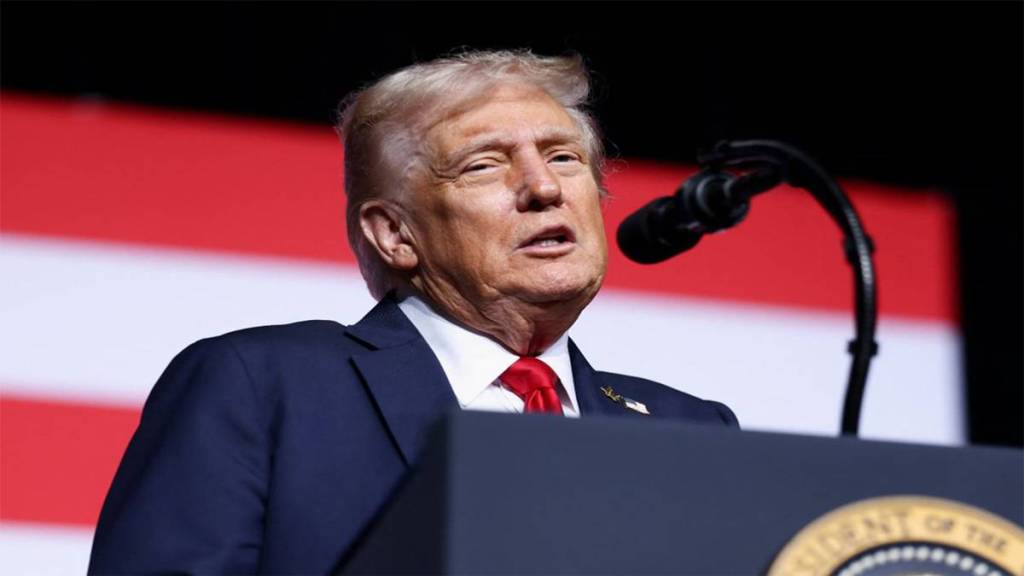Tariffs imposed under President Donald Trump’s ongoing trade strategy will cost global businesses over $1.2 trillion in 2025, according to a new analysis by S&P Global, with the majority of the burden falling on consumers, not companies.
In a white paper released Thursday, S&P said the estimate, which includes data from 15,000 sell-side analysts covering 9,000 companies, is likely conservative.
The costs stem from a range of trade actions, including across-the-board 10% tariffs on all US imports, plus specific levies on kitchen cabinets, timber, autos, and more.
“The sources of this trillion-dollar squeeze are broad. Tariffs and trade barriers act as taxes on supply chains and divert cash to governments; logistics delays and freight costs compound the effect,” said Daniel Sandberg, who co-authored the report with S&P’s Drew Bowers.
“Collectively, these forces represent a systemic transfer of wealth from corporate profits to workers, suppliers, governments, and infrastructure investors.”
According to the report, just one-third of the tariff costs will be absorbed by businesses, with consumers shouldering the remaining two-thirds. That consumer burden is likely an underestimate, S&P warns, as declining output means buyers are “paying more for less.”
White House defends tariffs as consumers feel the pinch
Though data suggests that American households are taking a significant financial hit, the Trump administration maintains that foreign exporters are the primary ones paying the price.
“The President and Administration’s position has always been clear: while Americans may face a transition period from tariffs upending a broken status quo that has put America Last, the cost of tariffs will ultimately be borne by foreign exporters,” said White House spokesman Kush Desai in a statement.
He added that many companies have begun reshaping supply chains and onshoring production to the United States in response to the new trade regime.
However, a Goldman Sachs report released Sunday challenges that claim, suggesting that US consumers are currently bearing as much as 55% of the tariff costs with that number expected to rise.
If more tariffs are introduced, including those Trump has threatened on products like furniture and kitchen cabinets, Goldman estimates that consumer burden could climb to 70%.
The analysts also noted that tariffs have added 0.44% to the Fed’s preferred inflation measure, and that figure could rise to 0.6% depending on future policy actions.
The Supreme Court is set to hear a challenge to Trump’s tariff strategy on November 5, and businesses appear to be watching closely before making long-term pricing decisions.
Even though Federal Reserve officials have largely dismissed tariffs as a one-time hit rather than a long-term inflationary threat, S&P’s findings suggest lingering impacts.
According to analyst consensus, profit margins are expected to contract by 64 basis points this year due to tariffs, improving slightly in future years by 28 basis points in 2026 and around 8–10 basis points by 2027–2028.
“In effect, 2025 locked in the hit; 2026 and 2027 will test whether the market’s optimism about re-equilibration is warranted,” the S&P report said.
Recovery depends on how effectively companies can adapt through technology, cost discipline, and global supply chain shifts.
S&P also noted a key turning point, Trump’s removal of the ‘de minimis’ exception in May, which previously allowed goods under $800 to avoid tariffs. The closure of that loophole led to “a shock” in shipping data, earnings reports, and executive commentary, Sandberg said.
In September alone, tariff revenues totalled more than $31 billion, pushing year-to-date collections past $215 billion. The White House has proposed rebates, subsidies, and even funding for food assistance programmes using the proceeds.
Yet the broader economic picture remains mixed. “In the optimistic scenario that this turbulence is temporary, the Trump administration’s tariff agenda and the resulting supply chain realignments are viewed as transitory frictions, not permanent structural taxes on profitability,” Sandberg said. Whether that optimism is justified remains to be seen.

